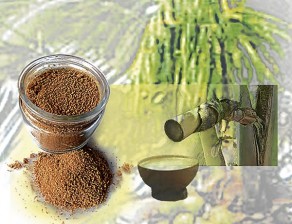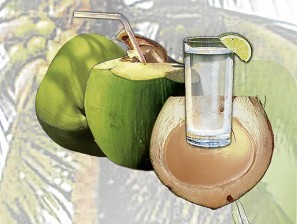What we can get out of our coconuts
“Health is the new wealth” is what drives the consumer market today. The coconut is emerging as the natural food of choice by science-minded health consumers. The new “coco-nomics” tells the Philippines—the world’s largest exporter of coconut—to invest the P8.5-billion dividend from the coconut levy in our economic health through the modernization of the industry geared toward emancipating farmers from poverty.
Plant a 6-month-old seedling
Out of the entire population of about 350 million coconut trees, 46 million are aging and need to be replaced at the rate of 1 million seedlings a year. The low-productive trees, which are at least 50 years old, are due to be retired, converted into coco lumber, coco biomass for fuel and pith food (ubod).
The most popular variety is Orgullo Tall, a superior and prolific coconut developed for the Philippine Coconut Authority replanting program by the Zamboanga Research Center.
Orgullo variety, also known as San Ramon Tall, will yield an average of 60 to 150 nuts per year, up from the national average of 45 nuts. By PCA’s calculation, with 100 trees per hectare, a plantation can generate a total of 7,730 nuts per year from trees planted inland to 20,540 nuts per year from trees planted within 3 kilometers from the sea. Peak productive life is 5 to 45 years.
Tap coconut sugar in 4 years
If the soil is well-irrigated and well-drained, the tree will sprout flowers in four years, ready to be tapped for its sap much like what tuba (toddy) gatherers do. A tree can produce 2 liters of sap that flows continuously for two days.
The collected sap is cooked slowly in low heat for four hours to evaporate the water. The residue becomes sugar in crystal or granule form. Eight liters of sap can produce a kilo of coco sugar. Forty-five liters of sap collected every other day will produce 5.62 kilos of sugar in a month. At the current price of P100 per kilo, farmers can net a good sum for their produce after subtracting the cost of labor.
Nutritional value. Natural coconut sugar has high mineral content, a rich source of potassium, magnesium, zinc and iron plus vitamins B1, B2, B3 and B6. Compared with brown sugar, coco sugar has twice the iron, four times the magnesium and over 10 times the amount of zinc. Unlike cane sugar, coco sugar has a low glycemic index, the ranking of foods on how they affect blood glucose. Coco sugar scores a low 35, making it the ideal sweetener for diabetics and for weight-watchers.
Harvest coconut water in 6 months
In six months, farmers can harvest green young coconuts from the middle level of the crown to get the best-tasting coconut water, known locally as buko juice.
Packaged in an outer green cover of fibrous husks and an inner brown hard shell is about 12-16 ounces of “living” water rich in growth hormones and enzymes from its endosperm—the tender, soft jelly-like meat lining. Coconut water is said to be the most hygienic fluid because it comes from a hermetically sealed coco shell.
Nutritional value. Scientists have found that the primary minerals or electrolytes in buko juice are essentially the same as those present in human blood. For this reason, doctors have used it as a safe and hypoallergenic intravenous fluid for rehydration, directly into the patient’s bloodstream. Because of its high potassium, which is 15 times more than that in a sports drink or twice as much as that found in bananas, the US Food and Drug Administration allowed coconut water to carry the claim that “it may reduce the risk of high blood pressure and stroke.”
With properties superior to commercial sports drinks, coconut water is becoming popular as a natural rehydration beverage among athletes and as an anti-aging tonic for fitness buffs. Big beverage companies have invested in sophisticated facilities that can keep the natural electrolytes and minerals in tetrapak without adding preservatives.
Extract coconut oil in 12 months
The coconut fruit fully matures in 12 months when its green cover turns brownish. It will yield a thicker white meat that has more oil (65 percent) than fiber (35 percent).
When used as food, the mature nuts are harvested by someone climbing up to pick them at the bottom of the crown. When used as raw material for cooking oil, they are pulled down to the ground with a bamboo pole. By selling the husked nuts as copra, farmers give up the following health-giving foods that fresh coconuts provide:
Coconut water, usually wasted in copra, is collected on site in a fresh coconut processing plant to be packaged into buko juice.
Desiccated coconut is the shredded and dehydrated meat used in macaroons, breakfast cereals and cake toppings. It is popular for improving the flavor and shelf life of cakes and cookies. Diced or shredded, coco meats are made into desserts like bukayo (sweetened coco meat).
Coconut milk is the liquid extracted by crushing shredded coconut meat. The milky ingredient is popular for cooking curried food. Coconut milk is also a good nonlactose substitute for dairy ice cream because its fat content is free of animal cholesterol. The nondairy milk is used as a health drink for lactose-intolerant babies and as a sports drink for athletes and runners. The milk can also be fermented into yoghurt or made into a favorite gelatin dessert as nata de coco.
Virgin coconut oil (VCO) is extracted from fresh coconut meat (as opposed to dried copra) through mechanical or natural means, using no additives.
Virgin oil can be obtained through natural fermentation without using heat. First, by pressing shredded coconut meat in cloth to squeeze out the milky liquid. Second, by leaving the milky extract in a clear container overnight in the refrigerator until clear oil rises to the top, the cloudy liquid of proteins is left in the middle layer and coco water settles at the bottom. And last, by decanting the oil at the top for VCO.
Fermentation may produce high moisture content that can shorten shelf life. Commercial VCO goes through centrifuge or toll processing that uses just enough heat to reduce or remove the moisture content and improve the taste.
Nutritional value. Biochemists have shown that coconut oil’s unique molecular structure in medium-chain fatty acids (MCFAs) makes the oil easily digestible. Its predominant lauric acid has an antimicrobial ability that can overwhelm a wide range of viruses, bacteria and fungi in the body. It is an essential ingredient in infant formula. The latest research shows that its MCFAs make coconut oil an energy tonic used by the brain to feed brain cells, which helps to improve memory and prevent dementia. Recent medical studies have also shown that the
MCFAs can prevent depression. In a study, the subject becomes active and has a positive disposition, which led proponents to label coconut oil as a “happy food.”
Innovate with new consumer products
As a tree of abundance, the coconut is underutilized. Out of a total harvest of 15 billion nuts a year, 90 percent goes to copra. The remaining 10 percent is not sufficient to meet the new emerging markets in coconut sugar, buko water and virgin coconut oil.
If the Philippines can produce consumer-ready food products—like sports drinks from coco water, healthy diet foods from virgin coconut oil, and candies and breakfast cereals from coco sugar—instead of exporting raw coconut products, the country can realize higher revenues. To accomplish this, the Philippines must meet global food safety standards and provide incentives to private entrepreneurs.
Small coconut farmers must form a cooperative or association to gain access to funds in order to improve their farm facilities and rationalize harvesting. Once organized, they are the stakeholders the Philippine Coconut Authority (PCA) is mandated to serve and educate.






















